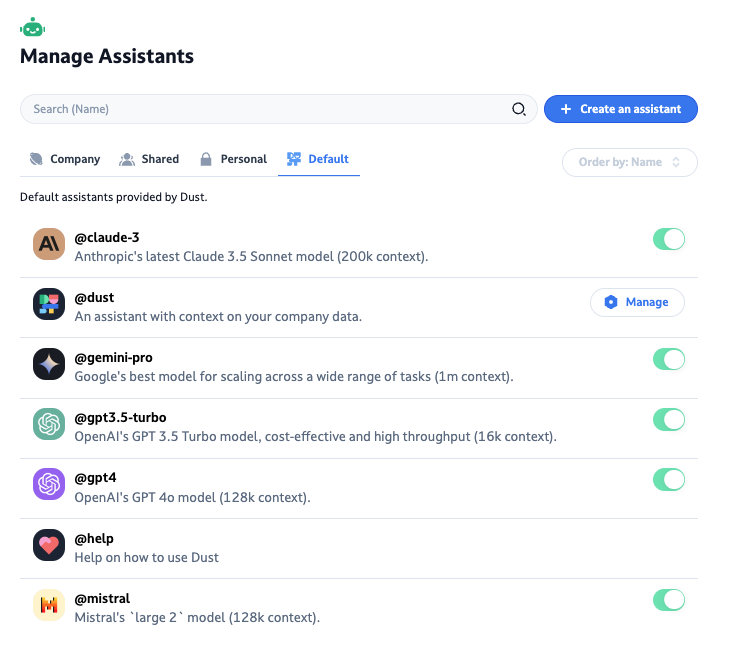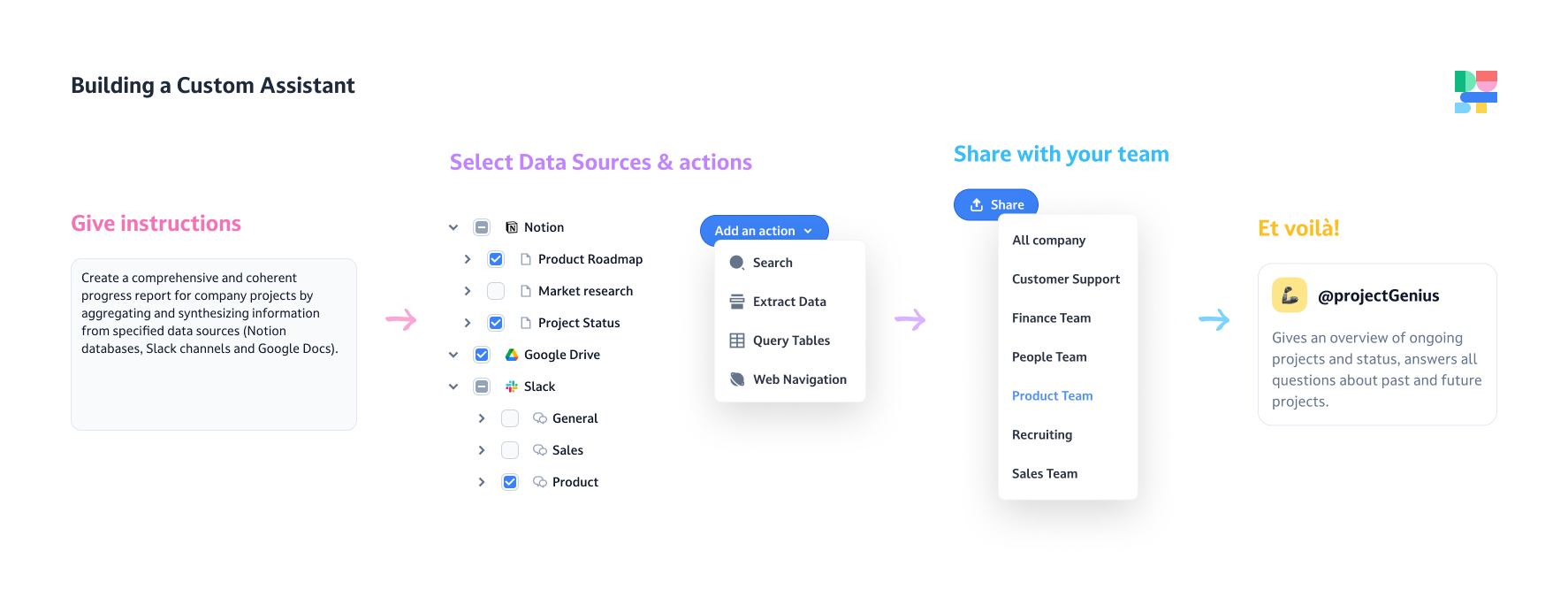Overview
What is Dust and how to use the platform
What is Dust?
Dust is a platform that enables teams to create customizable and secure AI assistants powered by leading large language models. These assistants integrate with company data sources to enhance productivity and improve work processes across various domains
Where do I begin?
👶 You're new to AI and LLMs
Our best advice is to ask questions to @gpt4, @gemini-pro, @mistral, and @claude-3 simultaneously in the chat bar for everything, from work tasks (ask it to help you innovate, summarize documents, write emails, give advice) to fun (use it instead to write fun stories or, poems).
Using assistants effectively is always a little weird, and there is no instruction manual, but we found that after around a few hours of using @gpt4 and @claude, people get it.
You will learn how models behave, which is helpful when creating assistants.
🤺 You're already an LLM user
You should have a Builder role in Dust. If you are not, ask the admin of your workspace. Keep practicing and sharing your best (structured) prompts to help others use your assistants or create their own.
Quick start guide
1. Watch this short demo video
Start by adding a Connection
You can use Dust without connections to your favorite tools, but connection allows you to retrieve, explore, repackage, and share knowledge in a quick and friendly way.
Go to ️Admin > Connections > Select the desired Connection, click Connect > Authenticate your account, and select the data you wish to synchronize with Dust.
If you don’t want to connect your everyday business tools to Dust (yet), as a builder, you can also:
- Create a Data Source, as you would create a new folder in Google Drive.
- Synchronize a Public Website (only): data will be refreshed based on the selected frequency; you can define the maximum number of pages you want to index and the depth— of links to follow from the first URL.
About sharing data and permissionsAny data you synchronize with Dust is then accessible to all the workspace members. Ensure you only share documents that can be shared with your entire workspace.
Set up your very own @dust
@dust is created to help you explore your company data. It is a general assistant that is better at exploration than answering with 100% accurate answers. Think about it as your company data researcher or librarian.

4. Start asking questions to @dust and other Dust assistants like @gpt4 and @claude to get to know Dust
How do I use an agent?
- Type your message and mention the assistant with "@", or click the robot icon 🤖 in the message bar.
- Always start with "@" when calling an assistant, or it won't respond.
You can also chain assistants!
Let’s try this:
- Ask @dust about your company
- Then, in the same conversation, ask @claude and @mistral to add their thoughts ✨
How do I use an agent in Slack?
- If enabled by your admin, you can use the @dust assistant in Slack channels, exactly as described above
- To call other assistants, use the syntax @dust ~gpt4 OR @dust +gpt4 and your question to engage with @gpt4 for example (change
gpt4toany company assistant nameto interact with it!) ⬇️

5. Create your first custom assistant
Here is the flow you will follow to create an assistant:

Think about the questions you are asked too often about this document or something you must do every week/day.
Click on Create a new assistant, and give it a try!
Must Read: The three rules to create great assistants
Based on our experience rolling out Dust assistants to augment our customers’ teams, we can share three rules:
Rule #1The more data you give access to an assistant, the lower the chance of retrieving the correct information.
Rule #2What kind of assistant do you want to build?
- support assistant to answer questions about policies, processes, codes, FAQs…— they are specialized in one topic;
- research assistant to explore a corpus of knowledge— they have a larger knowledge and the usual way to interact with this assistant is to iterate with it;
- generation assistants— to create blog posts, memos, cold emails, and summaries…;
- structured data assistants— to analyze DBs.
Then, try to understand how chaining assistants can complete more complex tasks: a typical “chaining” is iterating with @researchassistant and turning your research into a document with @generationassistant
Rule #3Invest some time in your assistant's instructions: test different prompts and models and keep iterating. Good instructions make the difference between poor and great results.
Updated 16 days ago
